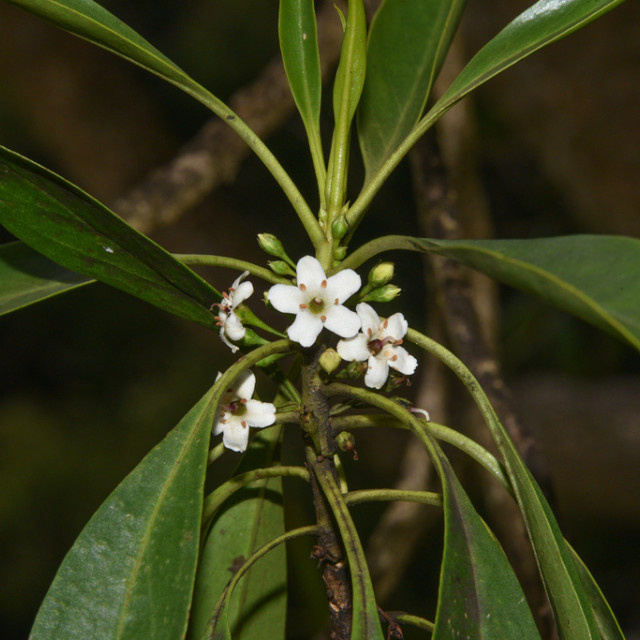COMMON NAME
Naio
SCIENTIFIC NAME
Myoporum sandwicense
ALSO KNOWN AS
False sandalwood
Plant family
Figwort (Scrophulariaceae)
Plant group
Broadleaf Evergreens
Naio can be a shrub or a tree up to 30' in height and up to 1' trunk diameter. It can grow low and spreading or tall and upright. Near the treeline, naio usually reaches just 2' tall.
32 reports
2+
OBSERVERS
32+
OBSERVATIONS
Identification hints
Naio can vary in leaf shape and size, the number of flowers per cluster, and in the shape of its fruit.
Did you know?
The name Naio is also the hawaiian name for pinworm seaweed. The genus name, Myporum, comes from the Greek words "myo" for "close" and "poros" for "pore" and refers to the leaf glands, which are close together. Naio wood is yellowish in color and oily in texture. It has been used to make many things, including ornamental end pieces for boats, called manu and canoes. The wood has also been shipped to China for use as incense. A type of forest, mamane-naio forest, is home to the endangered honeycreeper, Palila.
DISTRIBUTION IN TH U.S.
Hawaii
HABITAT
This tree/shrub can grow in a variety of habitats from dry to wet forest and shrublands near the treeline.
ATTRIBUTES
Leaves
Leaves arise one at a time along the stem (alternate), variable in length, from 1.5 to 9" long, green, and waxy. Leaves crowd near the ends of the branches.
Flowers
Clusters of 2-6 flowers are borne on a >1" long stalk in the leaf axil. Individual flowers are 5-petaled, white to purple or pink, bell-shaped, giving off a honey-like smell. The flowers can appear year round.
Fruits
Naio fruits are tiny and waxy white berry-like drupes that can turn brownish in color. They are said to be bitter tasting. Dried fruits typically remain attached to the branch.
Bloom Time
Blooming throughout the year.
See Menu
- 2021 Chicago Botanic Garden. All Rights Reserved.
-
Creative Commons
BY-NC-SA 4.0 - Terms of Use
- Privacy Policy
- Data Sharing and Citation Policies
- 2021 Chicago Botanic Garden. All Rights Reserved.



